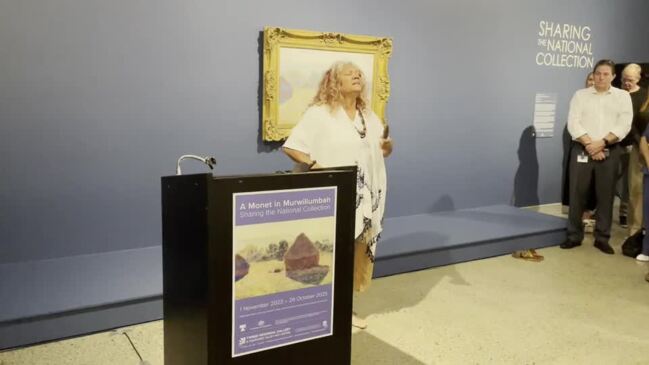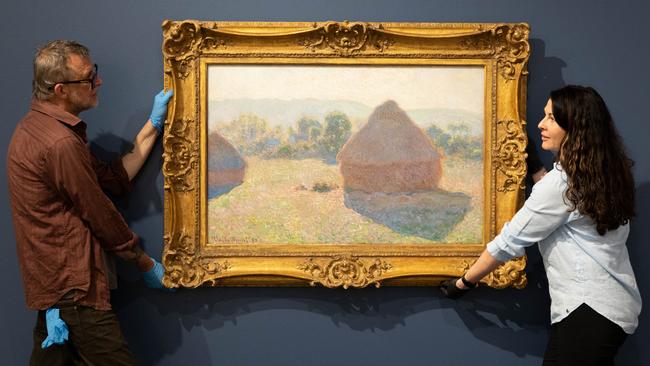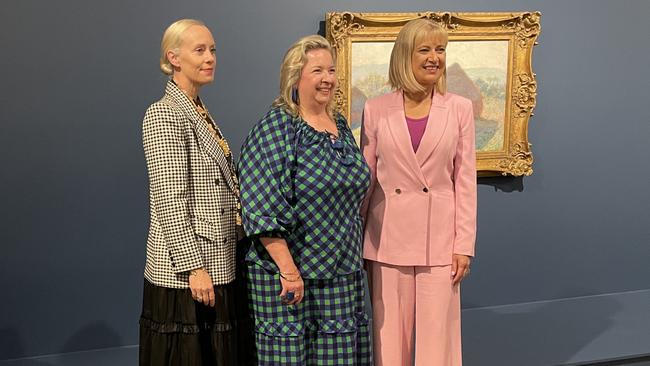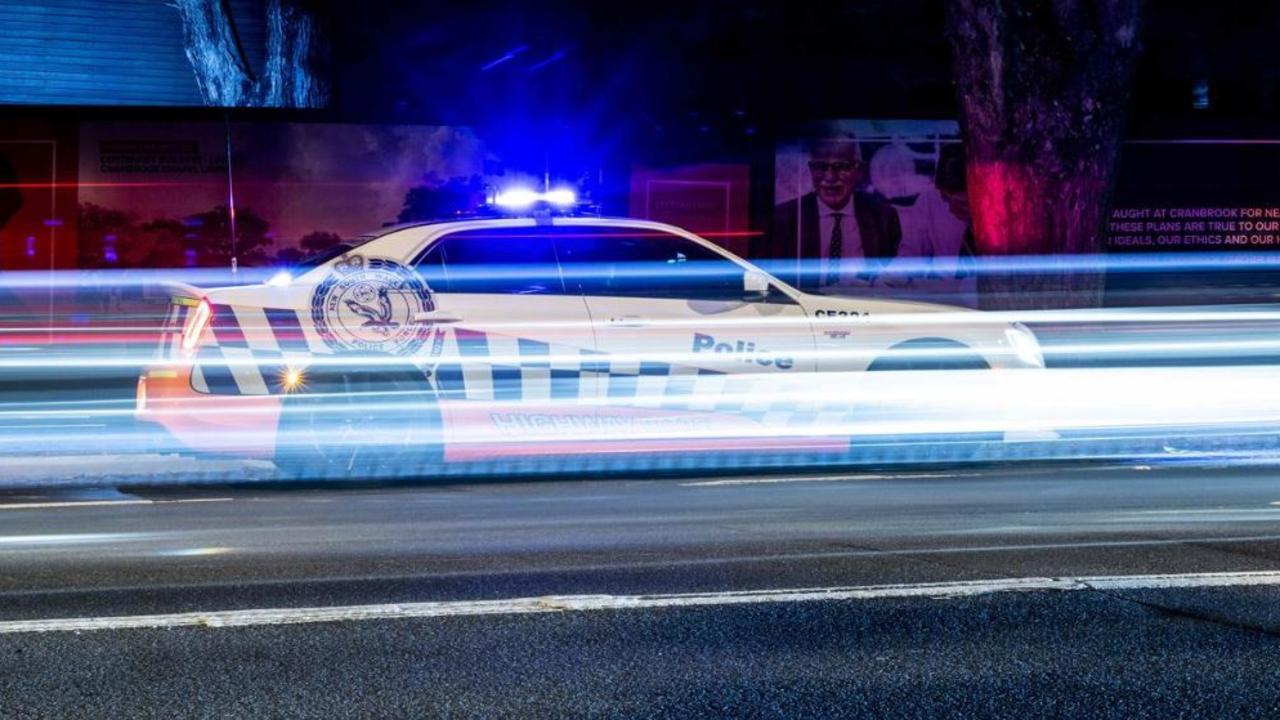Artist Claude Monet’s $174 million Haystacks painting on display at Tweed Regional Gallery in Murwillumbah, northern NSW
An eye-wateringly pricey painting by renowned artist Claude Monet has taken pride of place in a regional NSW gallery. Here’s the story behind the masterpiece’s arrival in a little Tweed town.

Tweed Heads
Don't miss out on the headlines from Tweed Heads. Followed categories will be added to My News.
One of renowned French impressionist artist Claude Monet’s most famous artworks – valued at a staggering $174 million – has landed in the unassuming Tweed town of Murwillumbah.
Monet’s Meules, milieu du jour (Haystacks, Midday) from 1890 is now on display at Tweed Regional Gallery in the little town, about 30km southwest of Tweed Heads.
As part of the National Gallery of Australia’s Sharing the National Collection initiative, the $174 million work was transported by truck to the gallery and public viewing opened on Wednesday.
A specialised container was required to move the art and the Tweed gallery, long recognised for its value to tourism in the area, has ramped up security – though is unsurprisingly tight-lipped about specifics.

The painting is being exhibited under a long-term loan and will remain in the Tweed until October 2025.
Monet used oil on canvas to paint stacks of wheat which stood in a field behind his Giverny home in Northern France. He was inspired by the changing effects of the of light, rather than the stacks.
Gallery director Susi Muddiman said the painting’s arrival marked a significant moment for art in Australia.

“We’re extremely proud to be the first gallery in regional Australia selected to participate in the National Gallery’s exciting Sharing the National Collective Initiative,” she said.
“This initiative provides a rare opportunity for people living in regional areas to experience an artwork of this calibre so close to home.”
“The gallery is the jewel in the crown of the Tweed Shire.
“Each year, we welcome more than more than 125,000 visitors, which is quite impressive for a building located in a paddock about seven kilometres from a small regional town.

“There’s no doubt the Monet will do much to enhance our reputation as a popular cultural destination.”
National Gallery of Australia deputy director Adam Lindsay said the painting arrived by road accompanied by armed guards.
The painting was tucked away in a bespoke insulated travelling case.

“The painting is in remarkably good condition so we didn’t have to do too much about the vibrations beyond making sure it was packed well,” he said.
“When it arrives the painting has to acclimatise in the gallery for at least 24 hours and then it was unpacked, checked and secured to the wall.
“We would like to see a 10 per cent increase in visitation as a result of this work.”

On security, Mr Lindsay said: “We asked the gallery for a facilities report before the agreement which details security.”
“We look at this and decide if anything needs to be refined, added or changed to ensure the safety of the painting,” he said.
“There is glazing on the Monet, it’s so high quality you wouldn’t even know.”
The crooks “got the lot”, as tourist merchandise has declared. They have never been caught.

Richmond MP Justine Elliot said the masterpiece was considered a jewel in the Australian collection and she was delighted to see it shared locally.
Sharing the National Collection is part of the Australian government’s National Cultural Policy aimed at supporting the arts. $11.8 million has been committed over four years to fund transportation, installation and insurance of works.

The remaining works to be shared with the Tweed gallery from February 2024 are Natura morta (Still life) by Giorgio Morandi from 1956, and three paintings by iconic Australian artist Margaret Olley.
The Margaret Olley Art Centre is part of the Tweed gallery.





